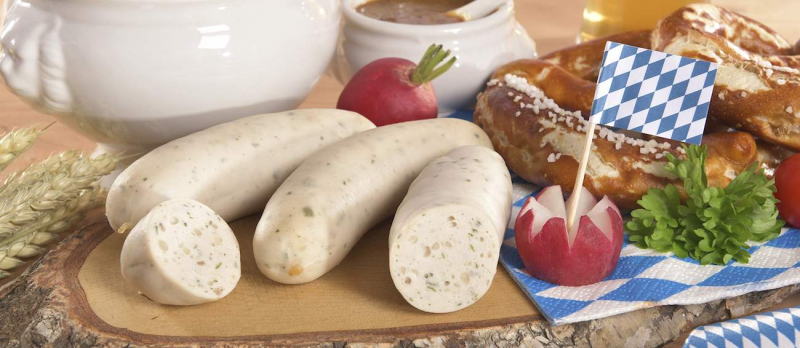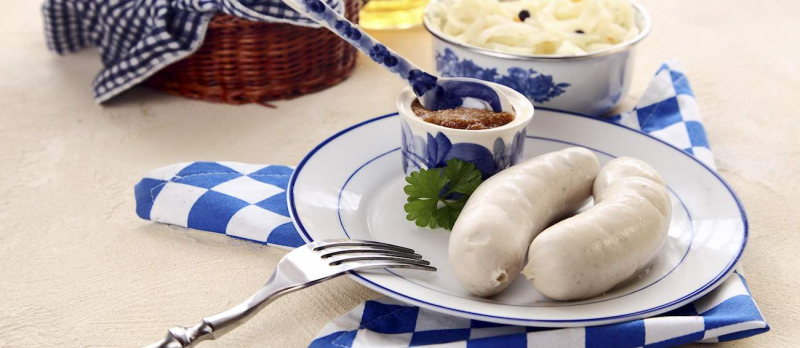Weißwürste

Weißwürste or white sausage is a famous specialty of Munich, invented in 1857 by a butcher named Sepp Moser. He was working in a restaurant next to his butcher's shop and had used the last of thick sausage skins used to make regular sausages. To solve the problem, he opted for thin skin. As he made the sausage, he was worried that it would burst open during the frying process, so he put them in hot water and cooked them for 10 minutes. After serving the cooked sausages to the guests, the new dish, and being praised, Weißwürste was born in restaurants.
The sausages consist of a mixture of pork, veal, and pork fat, seasoned with parsley, pepper, lemon, and salt. Today, the sausages are most popular in southern Germany, and they are one of the most consumed items at Oktoberfest. In restaurants, Weißwürste is always served hot, usually accompanied by pretzels and ideally, Händlmaier's Hausmacher Senf. Although it can be served with other Bavarian sweet mustard varieties if the original Händlmeier brand is unavailable.
The sausage casing is not intended for consumption, so the sausages are often sliced along their length, and the casing is peeled. Interestingly, it is considered taboo to eat Weißwürste afternoon in Bavaria.











